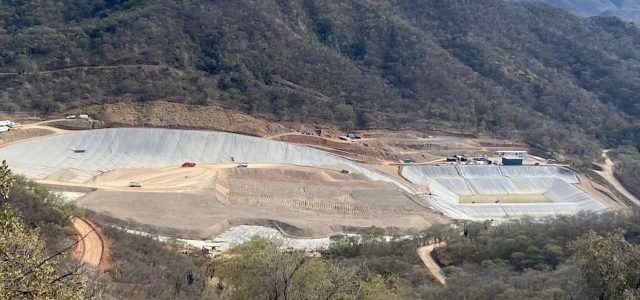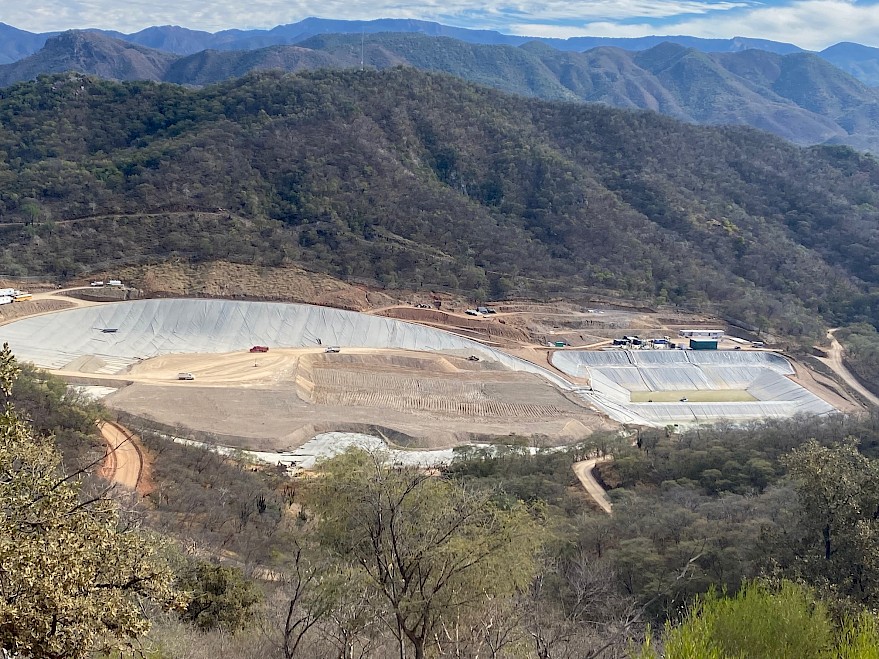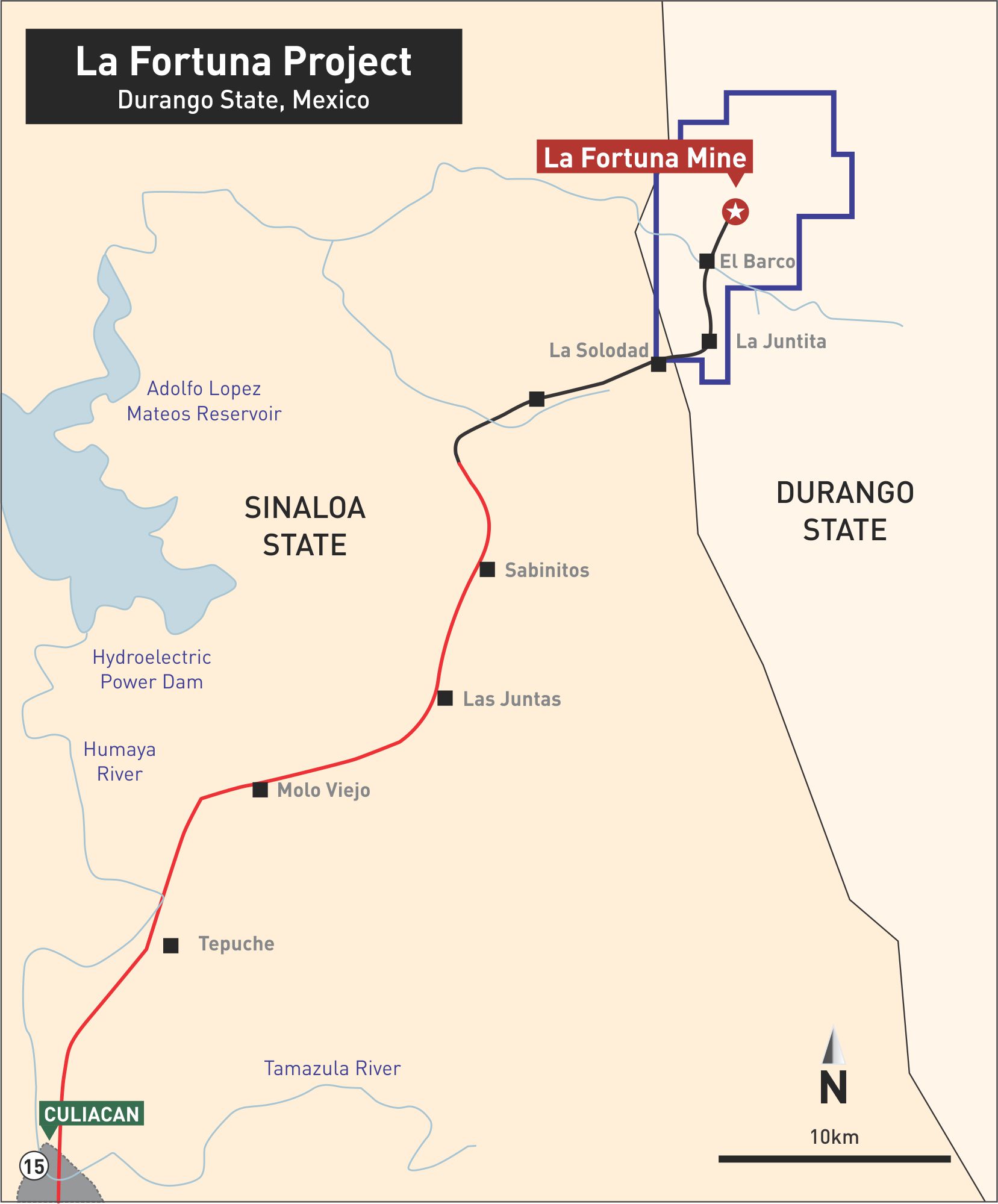How Minera Alamos Turns $20 Of Exploration Spending Into $2,000 Of Gold
Marijuana Stocks, Finance, & InvestingUncategorized April 20, 2022 MJ Shareholders

- Santana Gold Mine now ramping up to commercial production
- Two other advanced-stage gold projects also slated for production
With the price of gold currently bouncing around $2,000 per ounce (and likely heading much higher), gold mining is lucrative – if done right.
One junior gold mining company that has been quietly building its footprint in gold mining is Minera Alamos (CAN:MAI / US:MAIFF). Why should serious mining investors be taking a closer look at this emerging gold producer?
In a word, efficiency.
Minera Alamos epitomizes efficiency from exploration through to production
That commitment to careful management of shareholder capital starts with the Company’s gold exploration.
Peruse the corporate presentation for Minera Alamos, and one of the numbers that jumps out as you examine its High Quality Assets section is “historical exploration costs” at the Santana Gold Mine as that mine commences production.
Santana is Minera’s lead project, currently ramping up to commercial production with the first 9,000 ounces of gold ready for processing. The historical exploration costs of the gold that is being produced today at Santana (and sold for ~$2,000/oz) have been $10 – $20 per ounce.
Find an ounce of gold for $20 per ounce, sell that same ounce of gold for $2,000. That’s the beginning of a very successful gold mining equation. In between (along with efficient mine construction and efficient processing) is plenty of room for shareholder profits.
Minera Alamos isn’t the only junior gold company that can boast of exploration costs for gold in the range of $10 – $20 per ounce. But many of these ‘cheap’ ounces-in-the-ground never become anything more than ounces-in-the-ground.
The potential value from this economical gold exploration is never transformed into shareholder profits.
In some cases, the discoveries are made in geography that is so remote or inhospitable that the costs of actually putting a mine into production are prohibitive. In other cases, low grades or unfriendly geology mean that despite cheap exploration costs, the production costs remain uneconomical.
Sometimes, however, it just takes the right management team (with the right strategy) to transform a gold project from being “marginally economical” into a robust money-maker. That’s what Minera Alamos is all about.
When Dynamic Wealth Research recently spoke with the President of Minera Alamos, Doug Ramshaw, he passed along a slogan that has been a driving factor throughout MAI’s operations: “cutting costs, not corners”.
The end result is that today Minera Alamos is going into production with one mine and has two other projects which it is preparing to take into production. Longer term, management has the firm goal of scaling up production to become a mid-tier gold mining company.
One mine already built, two more low-cost projects moving to production
Santana Gold Mine
The Santana Gold Mine is situated on a 100%-owned 4,500-hectare property accessible off of a paved highway. When mining investors take a closer look at Santana’s operations, some might question Minera’s commitment to not “cutting corners”.
As of an April 7th update, the Santana mine has now delivered 14,000 ounces of open-pit gold production to the mine’s heap leach pads. But Minera has yet to produce its first official resource estimate for the project.

(Santana Gold Mine, Sonora State, Mexico)
Many mining investors are familiar with an operational model for mining projects that starts with a lot of drilling, moves on to the calculation of a formal resource estimate, and only then will (perhaps) seek to move to production.
However, that’s not the only way to put a gold mine into production, as Minera Alamos has now demonstrated with its Santana Mine.
The management of this company are proven mine builders and operators. This is not some junior mining company that just drills out projects and farms them out to larger miners or brings in larger partners.
Why do most junior miners operate in this manner? Why does Minera not follow this mining blueprint?
Doug Ramshaw provided further explanation.
The Santana Gold Mine has been taken into production, using low-cost heap leach mining, at a cost of ~USD$10 million.
That’s barely a down-payment on the construction costs of most mines that will produce gold at a similar scale. Other junior mining companies need to produce a robust resource estimate first, as their only hope of lining up the much greater financing required to take their own projects to production.
Minera anticipates the Santana mine being scaled up to a production level of approximately 50,000 ounces of gold per year.
With a gold price of ~USD$2,000 per ounce, that’s in the ballpark of USD$100 million in annual revenues. With Santana expecting to produce its gold at strong margins, Santana’s capital costs will be recouped long before the mine completes its first year of gold production.
Efficiency.
Minera is working on a resource estimate for Santana now, and expects it to be produced before the end of H1 2022. And the Company has done a lot of drilling on the project: in excess of 30,000 meters to date, with Phase 3 drilling currently ongoing.
Plenty of gold-bearing ore has been delineated by previous drilling to prepare a resource estimate. In turn, that will provide greater transparency for investors especially with respect to the mine life of Santana.
With all the geological “pipes” of gold-hosting mineralization on Santana to date found to be gold-bearing, considerable potential exists to further expand on the known mineralization through continued exploration.
Cerro de Oro
Cerro de Oro (or “golden hill” in Spanish) is a 100% owned, 6,100-hectare property that will be the 2nd Project that Minera Alamos advances to production. Cerro is also accessible off of a paved highway.
Here the Company does already have a resource estimate in place: an inferred resource of 600,000 ounces of gold in a constrained pit with an extremely low strip ratio. Again, some mining investors may raise their eyebrows.

Even with an increasingly robust price for gold, many (most?) junior gold mining companies have been seeking higher-grade projects – supposedly for the better economics of such projects.
However, “high grade” typically means underground mining, which takes us right back to the familiar (expensive) model of extensive drilling to carve out a large resource, to finance a mine with capital costs likely well in excess of $100 million.
Grades here do not concern Minera’s management. In fact, the Cerro pit has a déjà vu feel to it for CEO Darren Koningen and the Minera team. They took the El Castillo gold project (with very similar grades) and tripled the size of the resource before it was sold off to Argonaut Gold.
Today, the El Castillo Gold Mine is winding down after close to 15 years of production and roughly 2 million ounces of gold. That’s 600% more gold than the starting resource when the Minera team first put it into production – (under the Castle Gold Corporation banner).
The Minera Alamos model is open pit mining via heap leaching. A mining veteran with 25+ years of experience, Doug Ramshaw knows that many of the most successful mid-tier and even senior gold mining companies today launched their own path to success with a similar production model.
Indeed, Ramshaw and the Minera Alamos team themselves learned from one of the ultimate mine-builders in the gold mining industry, Canadian Mining Hall of Fame inductee, Chester Millar.
In the early 1970s, Millar turned his attention to the western United States, where he pioneered the use of heap leaching to process low-grade gold ores and demonstrated the success of the method at several open-pit mines.
The relevance here is that Ramshaw, CEO Darren Koningen and much of the Minera team have worked with this mining legend in developing the Santana Gold Mine.
At that time, it was under the banner of Corex Gold. In April of 2018, Corex merged with Minera Alamos to become the current entity.
When you have the chance to work with a Hall-of-Famer, astute individuals will take advantage of the opportunity to absorb all that they can. And “astute” is a label that certainly applies to the Minera team.
Said Chester Millar:
Each one of those mining companies has either graduated to the status of a mid-tier gold miner, or was acquired by a mid-tier (or larger) gold mining company. Chester Millar basically wrote the book on using heap leach mining to build gold companies.
Now 95 years old, Millar has moved on to other opportunities in the gold mining industry.
What he left behind, in the hands of the Minera Alamos team, was the blueprint for building a mid-tier gold miner.
Using that blueprint (and with the price of gold now hovering closer to $2,000 per ounce), Minera is confident they can turn Cerro de Oro into another cash cow for the Company.
Officially, Minera Alamos’ position on the Project is that “a production decision” will be made on Cerro de Oro toward the end of Q1 2023. That coincides with when the Company expects to receive its permitting for Cerro de Oro.
However, a strong clue that management is fully committed to putting Cerro de Oro into production comes with how options have been structured for members of management. These options only vest at certain levels of gold production.
If Cerro (or Minera’s 3rd project, La Fortuna) doesn’t go into production, Minera’s management team loses out doubly. They won’t reap the benefits of this production as shareholders themselves, and they will also lose out on potential options.
When permitting is received and the expected decision to move forward comes, then in as little as 6 or 7 months, Minera Alamos could begin mining gold from the Cerro pit.
In speaking with Ramshaw, he indicated that construction costs for the mine will be higher than those for Santana. Ramshaw offered a ballpark figure of USD$25 million for construction when speaking with Dynamic Wealth Research.
Ramshaw anticipates Cerro de Oro becominga 60,000-oz + producer. This means that along with the ramp-up of Santana, this would already take the Company above 100,000 ounces in annual gold production.
At $2,000 per ounce gold, that’s >CAD$250 million per year in annual revenues. That’s in excess of 5X the total costs of putting both mines into production.
Crunch those numbers, and it gets much easier to see how/why the “Chester Millar blueprint” (and now the Minera Alamos blueprint) for putting gold mines into production is a money-maker.
La Fortuna
La Fortuna (“luck” in Spanish) is the 3rd Minera Alamos project in chronological terms. But for investors, it’s literally the icing on the cake.
This is a 100% owned, 6,100-hectare property (subject to a 2.5% NSR royalty) that is accessible off of a paved road and already full permitted.

Minera Alamos is a Company with the savvy and the track record to take low-grade gold projects and turn them into profitable mines. La Fortuna is a high-grade Project, relative to most open pit gold deposits.
La Fortuna has a defined resource of 300,000 ounces of gold (along with silver and copper credits) with an average grade of 2.78 g/t Au. Including the silver/copper credits, average grades at the La Fortuna pit will be 3.5 – 4 g/t (Au equivalent).
No heap leaching at La Fortuna, as Minera Alamos has already acquired its own 2,000-tpd mill. A 2018 PEA estimated an after-tax IRR 0f 93% for the La Fortuna mine, based upon a 50,000 ounce/year operation. This works out to 1,100 tpds of feed for the mill.
That IRR is based upon rock-bottom gold production costs (AISC) of USD$440/oz. But the PEA was based on an assumed gold price of only USD$1,250 per ounce. At current gold prices, the IRR becomes much more robust for La Fortuna.
Here Minera Alamos is holding back on a production decision, despite the Project being fully permitted. Why?
That can be answered with another of the slogans that Doug Ramshaw has introduced into the Company’s operating philosophy. “Better to do things right than to do them rushed.”
Translating that to La Fortuna, Minera Alamos is looking to make the Project bigger.
The current pit provides a mine life of 5 years. That’s enough production to pull $100s of millions in profits from La Fortuna (at current gold prices), but management sees the potential for much more.
Through additional drilling, management is confident they can build on the existing resource. In turn, that would permit a scaled-up production model. Ramshaw envisions La Fortuna operating at ~1,800 tpds, thus better utilizing the capacity of its mill.
With two mines slated to go into production ahead of La Fortuna, Minera Alamos has the luxury of taking additional time to (hopefully) produce an even more robust Project here for shareholders.
Mid-tier gold miner in-the-making
Minera Alamos is an emerging junior gold producer with its sights set on becoming a mid-tier producer, and a concrete strategy to achieve that status.
Most mid-tier gold producers today started as a junior producer. With many of these companies, it was never clear they would ‘emerge from the pack’ until their business model was well advanced.
It’s a different story with Minera Alamos and its efficiency-first approach to gold mining, from exploration right through to production.
No need to bring in larger partners that dilute the value of these mines for shareholders. With the capacity to put into production low-grade gold projects (that other companies deem “uneconomical”) and at strong margins, this does more than just reduce risk for investors.
It means that (wherever it looks for new properties) Minera Alamos will be able to find new money-making gold projects that can/will be passed over by its peers. Not just greater gold mining efficiency but also more opportunities for putting mines into production.
It’s a simple, connect-the-dots business model that will give gold mining investors considerable confidence that they are investing in a mid-tier gold producer-in-the-making.
It’s also a business model that makes Minera Alamos an especially effective hedge against inflation in today’s high-inflation environment.
Coming soon: how/why investing in Minera Alamos is an ideal hedge against inflation.
DISCLOSURE: The writer holds share in Minera Alamos.
MJ Shareholders
MJShareholders.com is the largest dedicated financial network and leading corporate communications firm serving the legal cannabis industry. Our network aims to connect public marijuana companies with these focused cannabis audiences across the US and Canada that are critical for growth: Short and long term cannabis investors Active funding sources Mainstream media Business leaders Cannabis consumers










